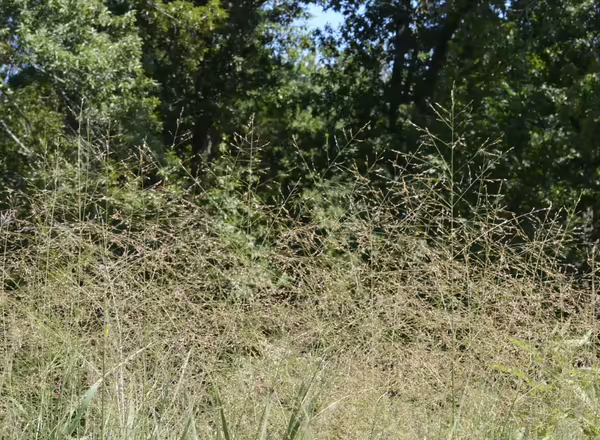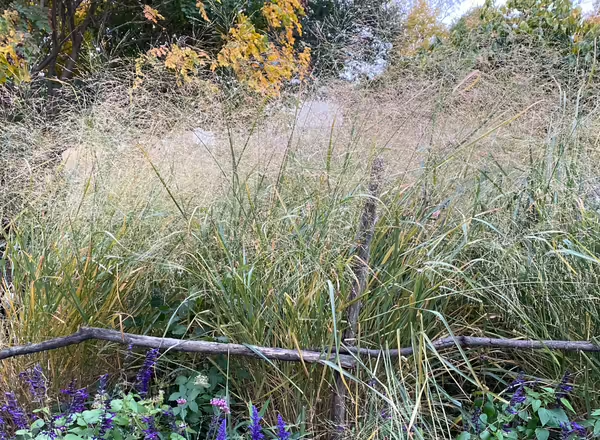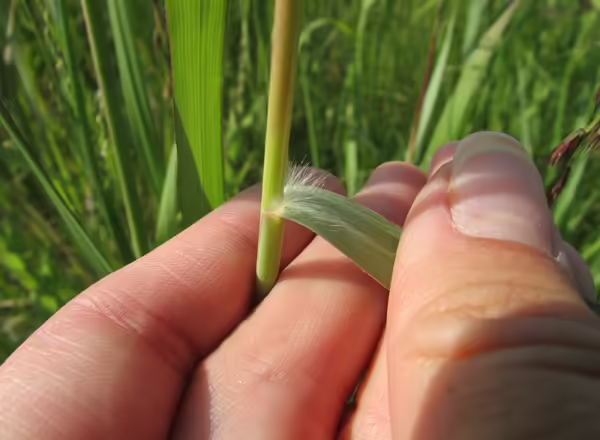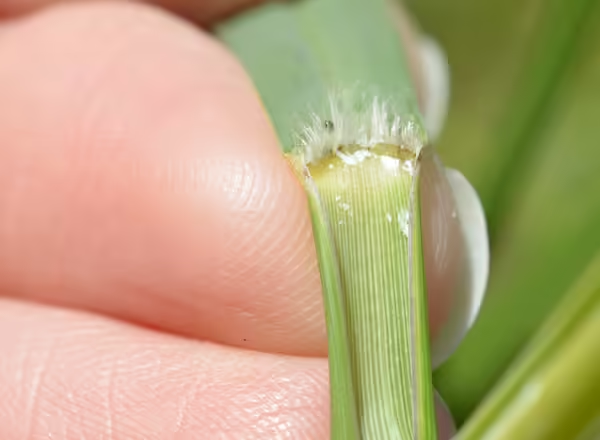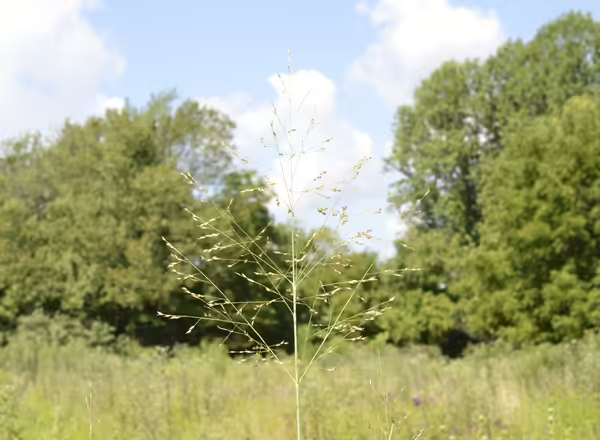An iconic tallgrass prairie species
The top three grasses that bring the tallgrass prairie to mind are Big Bluestem, Indian Grass, and Switchgrass. Why? These are all robust, tall species of grass that form the basis of tallgrass prairie plant communities in the Midwest. These grasses have deep roots and are built to withstand fire and grazing. Switchgrass (Panicum virgatum) has a bunching growth habit, showy seed heads, and fall interest.
Telling it apart from other tall grasses
Switchgrass can be found in almost every county in Illinois, in prairies, savannas, and bluff habitats. It is a bunchgrass that grows to about 6 feet in height. Switchgrass has a dense collection of hairs at the base of its leaf blades, which often occurs in a triangular-shaped cluster. You can also find a membranous ligule amidst the hairs.
Bloom and fall interest
Switchgrass produces a very large panicle inflorescence that is open and airy. Usually about a foot tall, it has stiff branches and small spikelets, which can be green to red in color.
In the fall, the leaves of Switchgrass turn a straw color and curl tightly.
Need a refresher on grass identification terms, like ligule and spikelet? Check out this blog post!
